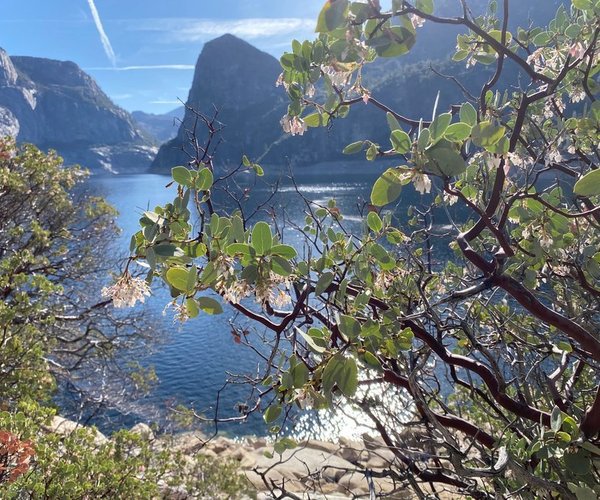Six officials. Six shovels. And six shovels of dirt overturned.
What happened just north of the Manteca Unified School District complex earlier this week was a low key affair compared to other groundbreaking ceremonies that happen on a regular basis throughout the South San Joaquin County.
But you could argue as ceremonial dirt tossing goes, it will reverberate through the Northern San Joaquin Valley for decades to come.
Representatives of the San Joaquin Regional Rail Commission (SJRRC), the San Joaquin Joint Powers Authority, and South San Joaquin Irrigation District officials broke ground on the first constriction project for the Valley Ral Program.
The box culvert project over a SSJID drainage canal is the foundational construction undertaking that will allow ACE train service between Ceres/Merced and San Jose to start rolling.
As such, it is the first component of the overall Valley Rail program that will connect Merced, Sacramento, San Jose and eventually the BART system via the Valley Link endeavor with the Lathrop Wye serving as the linchpin.
It will bring rail service to downtown Manteca as well as Ripon.
"This project is significant as it is the first step in delivering the infrastructure necessary to connect Stanislaus and Merced counties directly to the Tri-Valley and San Jose,” noted Tracy Mayor Nancy Young who serves as the SJRRC chair. “The Valley Rail Program will significantly enhance regional mobility and sustainability, benefiting travelers, visitors, and residents of the San Joaquin Valley and California as a whole.”
“I want to say a special thank you to the South San Joaquin Irrigation District. Your partnership is invaluable. It is incredibly important to the Valley Rail Program as well as all the communities that we serve.”
The 384-foot-long Box Culvert will function to allow the current irrigation drainage ditch to continue to provide irrigation for farms receiving water from the SSJID.
It also serves as a storm drain conveyance for approximately 10,210 acres of land in Manteca and rural areas to the south.
The new French Camp Outlet culvert will consist of a double-barrel reinforced cast-in-place concrete culverts and is needed to support the new wye connection tracks, which will curve over a portion of the SSJID canal.
The box culvert is expected to be completed by early 2025.
“It's great to be a part of this transformational project that's just getting started today,” noted SSJID Board President Mike Weststeyn. “And, for (the) South San Joaquin Irrigation District, and as the President of the board, it's great to be involved in a project like this that's going to change our community.”
The second phase will construct the Lathrop Wye Track and will provide the necessary track infrastructure to allow direct ACE train service between Ceres/Merced and San Jose.
The second phase is scheduled to begin construction in late 2025 or early 2026.
It will include double tracking through central Manteca to a point just south of where the ACE passenger platform will be built along Moffat Boulevard.
The current transit center parking lot will be expanded as part of the ACE platform project.
The project is one of many the SJRCC is undertaking working in partnership with agencies, districts, and cities along the corridor as it moves forward with the infrastructure improvements necessary to upgrade tracks, build stations, and create new connections.
"The Valley Rail Program is one of the most transformational things happening in the Valley for probably 100 years,” said SJRCC Executive Director Stacey Mortensen. “Passenger service disappeared in the Valley for many years on this particular line. Valley Rail brings that passenger rail service back with a vengeance.”
Regarding the Lathrop Wye Box Culvert Project, Mortensen said “Where we are right here [in Lathrop] is a connection in the Central Valley that has never existed. Trains today cannot come from the Modesto area and seamlessly travel over the Altamont Pass. They all have to either go north to Sacramento or they have to perform a long series of moves to travel toward the Tri-Valley and South Bay Area.’
“This project, today, helps us make that connection so that trains can make a “through move” with passengers over to the Bay Area and back.”
To contact Dennis Wyatt, email dwyatt@mantecabulletin.com






